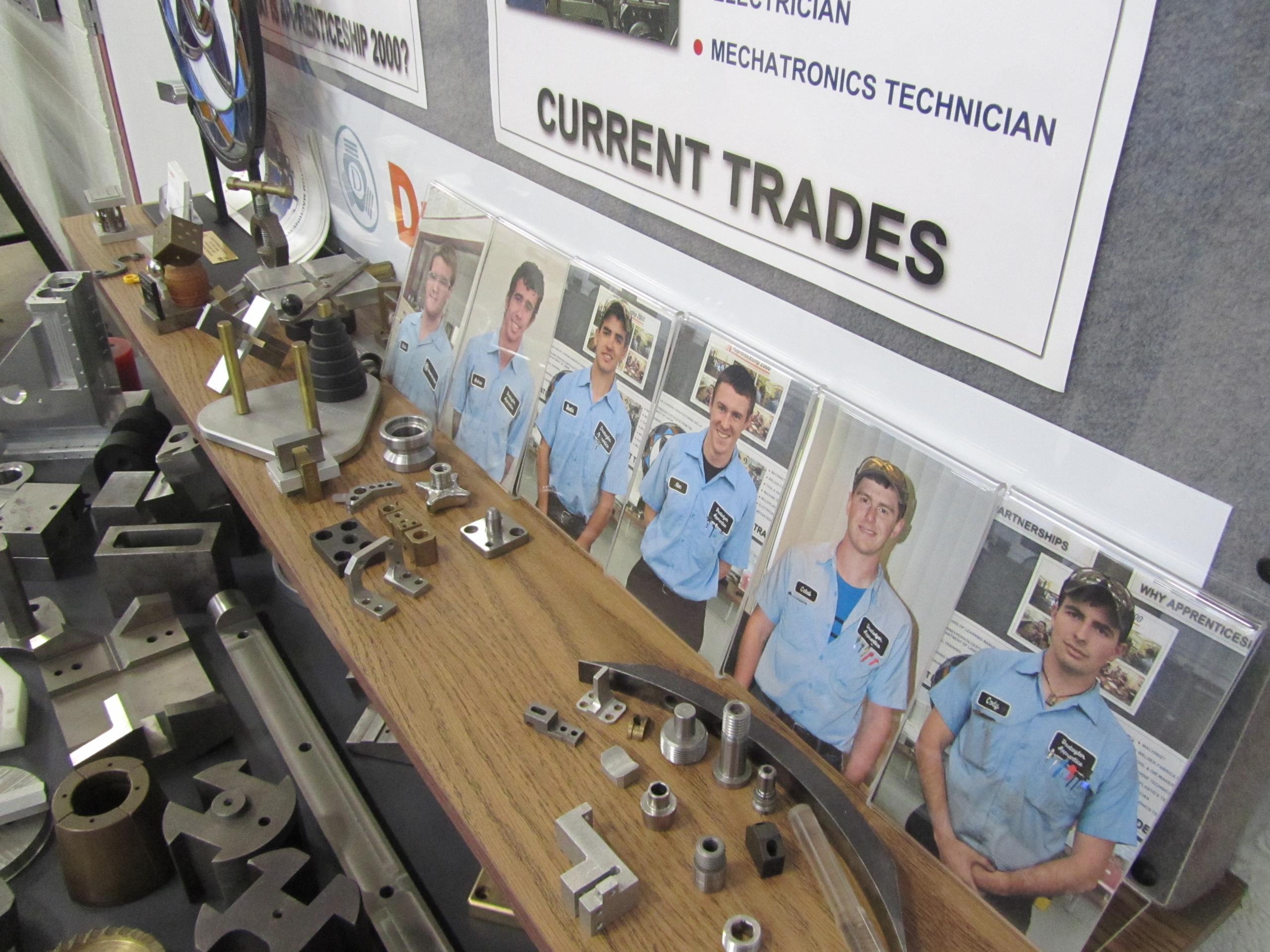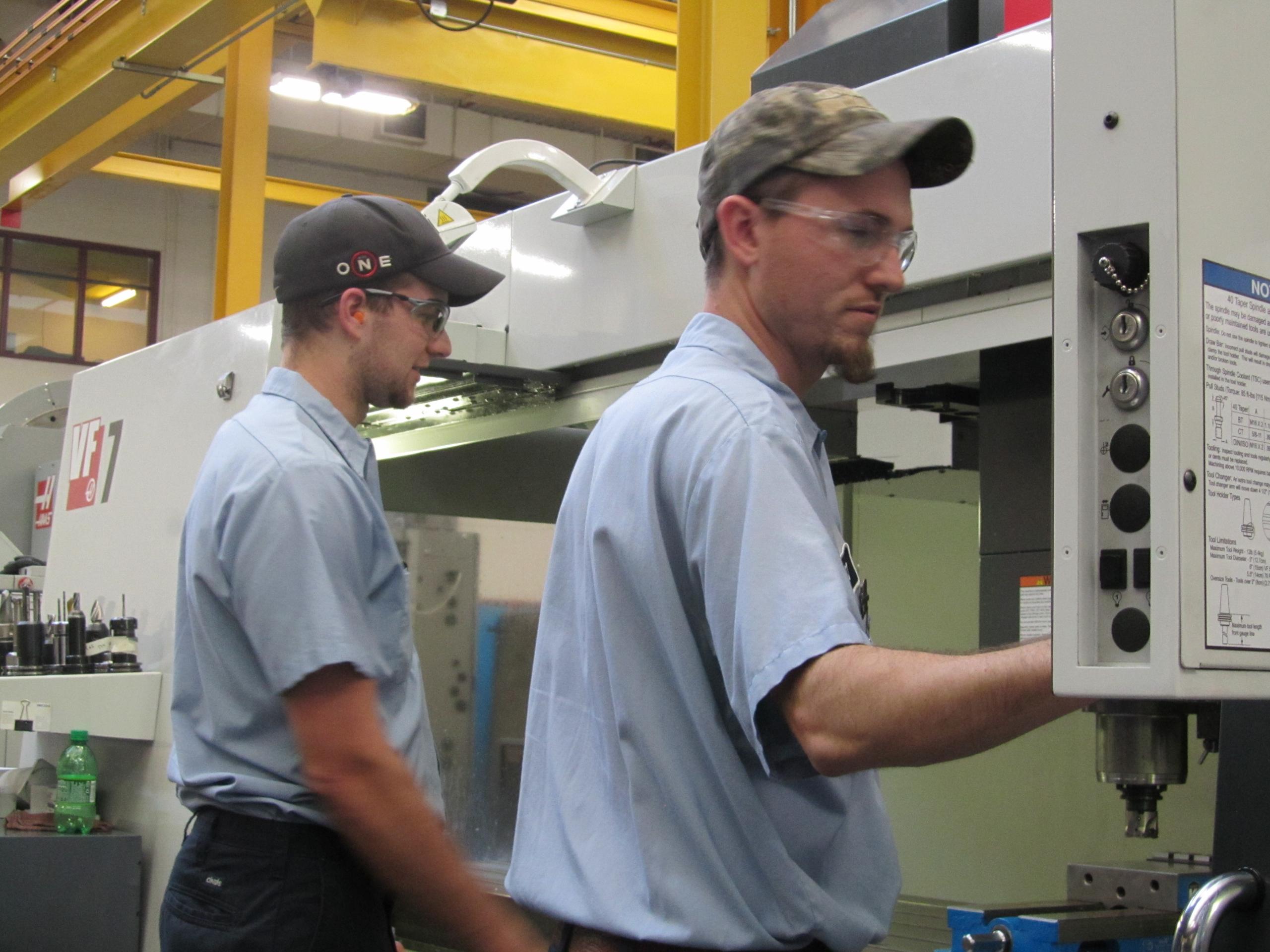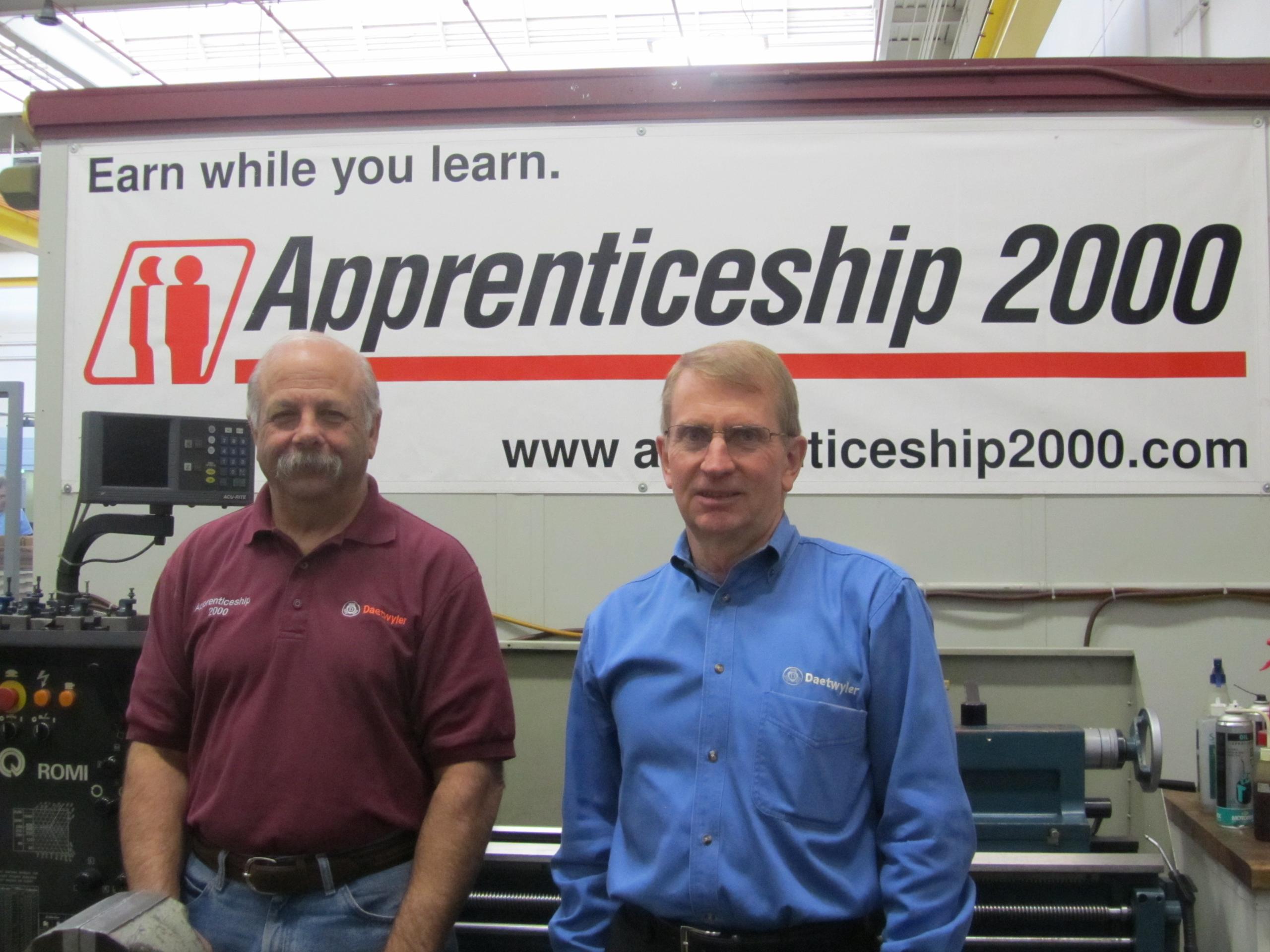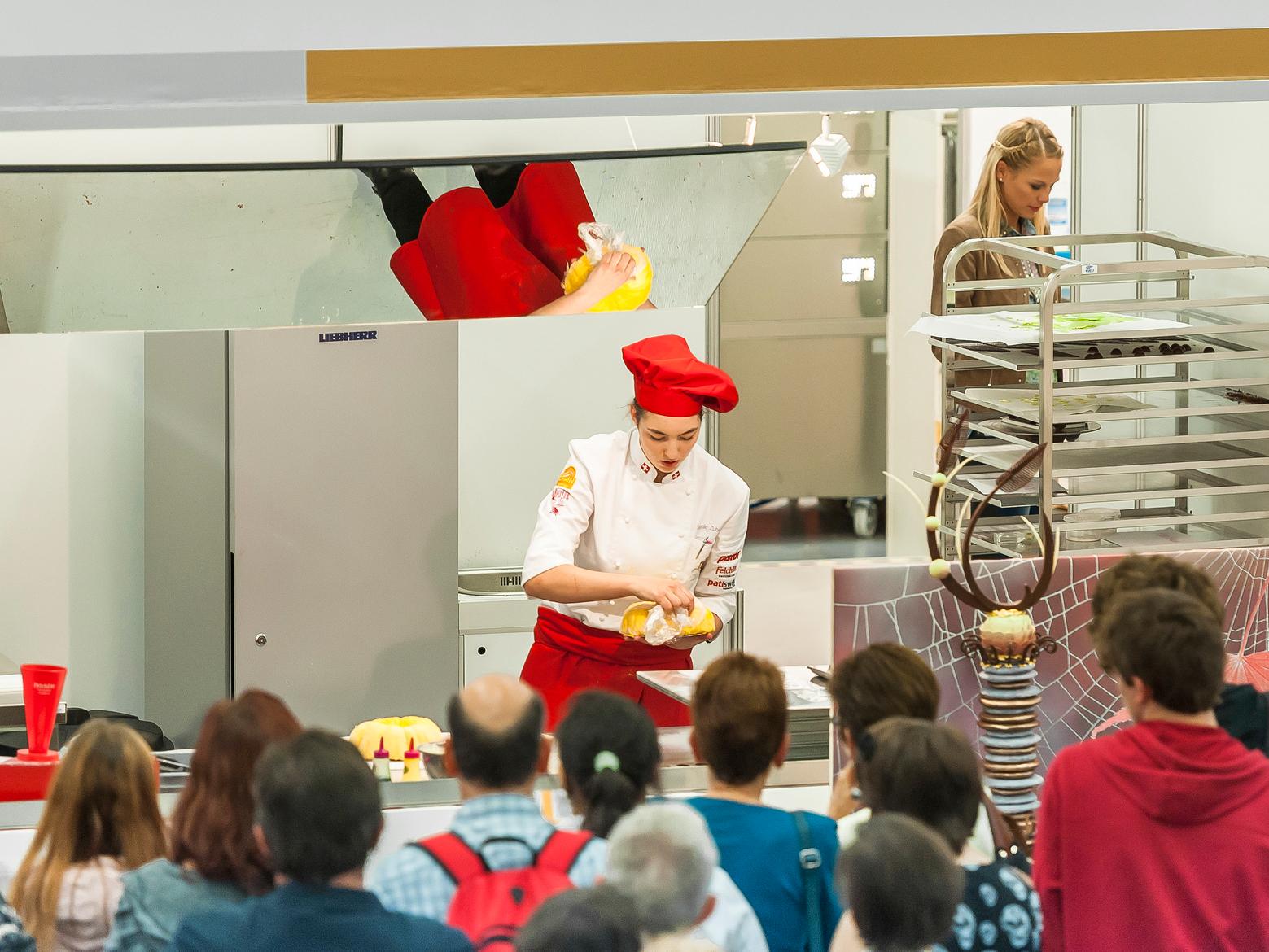Short on workers, a Swiss company trains them stateside

When the Swiss precision engineering company Daetwyler needed well-trained workers to fill the floor of its American factory, they were nowhere to be found. So the firm created them, launching one of the most successful Swiss-style apprenticeship networks currently operating on US soil.
Both Swiss and American flags fly in front of Daetwyler’s US headquarters, tucked among the urban sprawl north of Charlotte, North Carolina. Inside, there’s also a mix of cultures – Swiss German and English are spoken interchangeably while country music blares on the factory floor beneath a massive poster of the Matterhorn. A map of Bern’s old town hangs in the office of Executive Vice President Walter Siegenthaler, who moved from his native Switzerland nearly 40 years ago to head up the company’s American operations. His main challenge during those decades spent stateside has been finding enough good workers to keep the company going.
Last month, the administration of US President Barack Obama announced that $100 million (CHF101 million) would be put towards apprenticeship programmes in the United States, the most money ever earmarked for educating skilled workers through vocational training. But Daetwyler and other European companies with major American branches were way ahead of the government – because they had to be.
“In the mid-1990s we really had problems finding skilled labour, especially for our service department,” Siegenthaler told swissinfo.ch. “We just could not find the people.”
What skills did he need?
“When you’re servicing equipment in the field, it covers mechanical, electrical, hydraulics, pneumatics…a broad spectrum [of knowledge],” Siegenthaler explained. “We couldn’t just have a specialist in electronics, but we really needed people who could do a lot of things.”
Around that time, Daetwyler discovered that another company headquartered in Austria was having similar problems recruiting skilled workers for their operations in North Carolina. So the businesses joined forces, brought a few others on board and founded the Apprenticeship 2000 programmeExternal link – a local initiative to train the workers they needed themselves, from the ground up.
Here’s how it works: Apprentices usually start when they’re 17 or 18 years old, during or after their final year of high school. If they’re still in high school, they attend a half day of school and work at Daetwyler for a half day; if they have completed high school, they work at Daetwyler four days a week and attend classes at a local community college one day. The programme lasts four years, and graduates finish with an Associate’s Degree in Mechatronics from the college and a guaranteed job at Daetwyler, if they want it.
Siegenthaler and his colleague Bob Romanelli, who’s the apprenticeship coordinator at Daetwyler, talk about Apprenticeship 2000 with a lot of passion. And that’s what it’s taken for them to get the programme off the ground, keep recruiting new apprentices, and convincing teachers and parents that apprenticeships are worth it.
“We see a lot of complacency among the students [we try to recruit],” Romanelli admitted. “Often, over the years, mom and dad have told them they’re going to go to a four-year college. So it’s kind of a two or three-pronged battle that we have to fight, not just with the schools but with the parents and the students themselves.”
Central Piedmont Community College, which offers two-year Associate’s Degrees in everything from baking and pastry arts to welding technology, agreed to teach Apprenticeship 2000 students in separate classes, adjusting the curriculum to what the companies need. But the students haven’t come flooding to the programme – they have to be recruited, and every step takes work.
“We had to establish all of the curriculum, the training schedules; there was basically nothing in existence,” Siegenthaler added. “Almost 20 years later we still have to go out knocking on doors, finding students who are smart enough – because the work is quite demanding – and who like to work with their hands.”
One such student is a former Daetwyler apprentice named DJ who, at 23, now oversees computer-controlled cutting – or CNC – operations on the factory floor. He talks quickly and excitedly about his work, especially when discussing how it fits in with his lifelong hobby of fixing antique tractors with his dad.
“When this apprenticeship programme came up, I was sitting in a math class and my teacher gave me a pamphlet. I realized this was exactly what I needed to do to keep up with my antiques and be able to make all the parts that I need,” he said. “I’ve made a lot of [tractor] parts here [at Daetwyler], they let me stay here and work on it. And I’ve got my own lathe and mill at home now because of the apprenticeship programme.”

Focus on apprenticeships
Siegenthaler says the recent economic recession in the US, coupled with rising costs for a four-year college degree, have led to “a lot of talk” about apprenticeships in the US and how European systems could serve as models. For example, before the Obama administration funding was announced, Dr Jill Biden, wife of US Vice President Joe Biden, visited Switzerland to better understand its apprenticeship system. And on January 13, Swiss Economics Minister Johann Schneider-Ammann took part in a White House-led discussion on vocational training.
Apprenticeship 2000 itself has received awards from the Swiss Embassy in the US and Siegenthaler is always travelling the 640 kilometres (400 miles) to Washington, D.C. to speak to legislators about what the programme has achieved and how it could be replicated. But despite those successes, he and Romanelli know there are still many hurdles to overcome in order to turn that talk into action – starting with the American general education system.
“When students go through our orientation, they do some testing with simple math skills,” Romanelli explained. “They can do wonders with a calculator but when it comes to basic adding and subtracting, there are some real issues there…[and] it’s gotten worse.”
Daetwyler and other companies involved in Apprenticeship 2000 regularly bring high school teachers to the factory floor through a special programme to show them how the skills they teach in the classroom are applied in the workplace.
“It’s amazing. When we bring them in here, the teachers say, ‘I had no idea that manufacturing needs math,’” Siegentaler recounted.
Training for the long-term
And then there’s the question of standardising apprenticeships, like in Switzerland. Currently, Siegenthaler estimates “there are a good number of apprenticeship programmes in any US state,” but they are of varying quality and duration and don’t all offer universal qualifications like Associate’s Degrees at the end.
“Typically, American companies just try to train people for a certain task,” he observed. “We take the viewpoint that we are going to educate them on a much broader basis so that once they graduate, if we have a need in another department we can move them over there without training them first. But the typical American company thinks a lot more short-term, they want to have somebody now so they train them just for that. That’s where the differences are.”
Andrew, a 20-year-old Daetwyler apprentice, said that ability to rotate among different tasks during his apprenticeship led him down a new career path. He was convinced he was going to become a mechanical engineer – until his training stint in the electrical department.
“I ended up finding out I really do like electrical, so they switched my classes and I’m working towards an electrical engineering degree,” he said. “ It worked out great – I ended up working towards something I was already going to do: engineering. It didn’t hurt me out-of-pocket and it let me see if I was really going to like it, because in high school you really don’t know.”
Why invest?
Considering that Daetwyler and its partners in Apprenticeship 2000 shell out full tuition fees for each of the one to two apprentices each company takes on per year – plus paying them for the time they spend learning from a mentor in the workplace – about $160,000 gets spent on every trainee over the course of their education.
Is it worth it? Absolutely, according to Siegenthaler.
“A lot of companies say, why should we do the training and then give the employees to our competition? We don’t really see that because the program builds so much loyalty,” he pointed out. “If a graduate leaves right after graduation, we haven’t done something right. If we treat them right, it builds loyalty and they’re going to stick around.”

Christopher, an apprentice in his fourth and final training year at Daetwyler, told swissinfo.ch he still sees himself working for the company in 10 years – his goals involve “maybe taking over the department someday”.
For now, he’s being trained to travel around the US and the world as a service technician for Daetwyler.
“I’d like to stay here in the company, they’ve treated me real well here,” he said. “I’d like to keep working on the machines and traveling. I like working on the machines – it really makes me stay into my work and it keeps you on your toes on the time, it’s never monotonous or repetitive.”
Tip of the iceberg
But although it’s given Daetwyler and its partner companies some of the workers they need, the Apprenticeship 2000 programme is not a magic bullet.
“Finding the right workers is still a problem, that hasn’t changed,” Siegenthaler said. “We wish we could have a few more graduates because in the last two months we hired about 10 people for the machine shop, from as far away as Wisconsin [1450 kilometres away] because we just can’t find them locally.”
“Out of those, some are not even here anymore because we just couldn’t use them, they were not qualified. So it’s still an issue.”
In the future, he hopes state policies on how to fund and support apprenticeships also become more unified. In North Carolina, where Daetwyler’s US operations are based, any company employing an apprentice must pay $50 per apprentice per year in order to help fund the state’s Bureau on Apprenticeship and Training. But just 80 kilometres away, in South Carolina, employers who take on apprentices get a $1,000 tax credit for each person they train.
The bottom line, Siegenthaler said, is that the stakes are high.
“If we want to keep manufacturing going here in the US, we need skilled labour. I get all kinds of reports on my desk, and everyone is talking about the fact that we have a shortage of skilled labour. We can’t just talk about it, we have to do something about it. Otherwise, manufacturing is going to collapse.”
White House discussions
Championing the success of the Swiss apprenticeship system was one topic of exchange in the White House on January 13 between Economics and Education Minister Johann Schneider-Ammann, Swiss business leaders, and high-level advisors to US President Barack Obama.
The roundtable was part of the US government’s “Select USA” programme, which strives to strengthen the country’s role as a location for both domestic and foreign investors.
Schneider-Ammann plans to return to the US in July for a longer “Economics, education and innovation mission”, his department announced.

In compliance with the JTI standards
More: SWI swissinfo.ch certified by the Journalism Trust Initiative












You can find an overview of ongoing debates with our journalists here . Please join us!
If you want to start a conversation about a topic raised in this article or want to report factual errors, email us at english@swissinfo.ch.